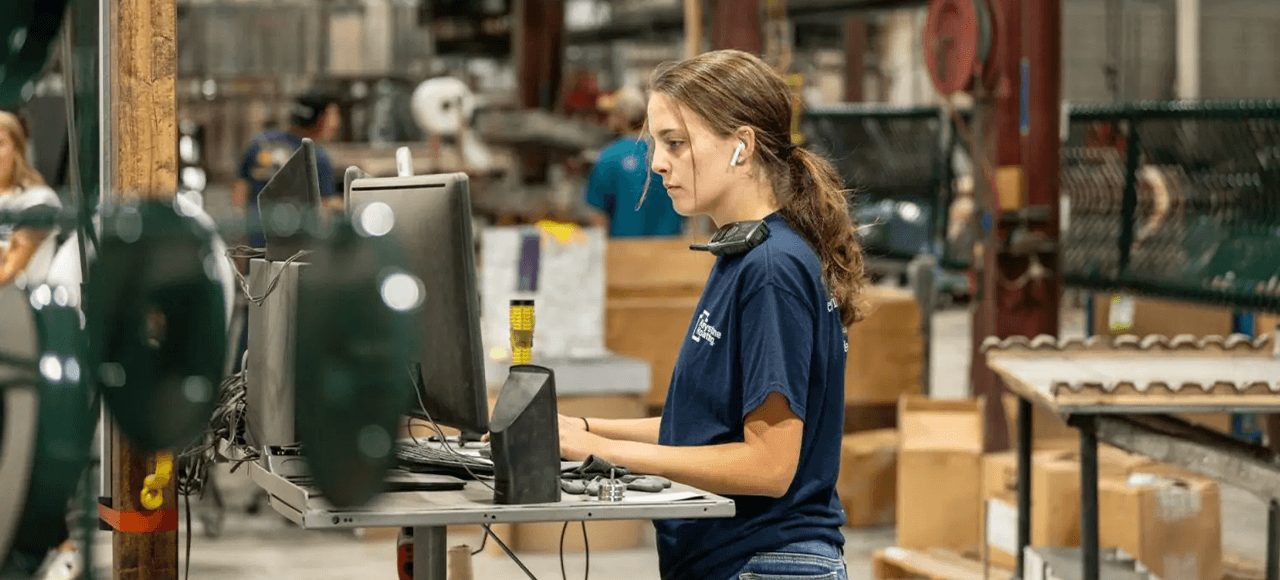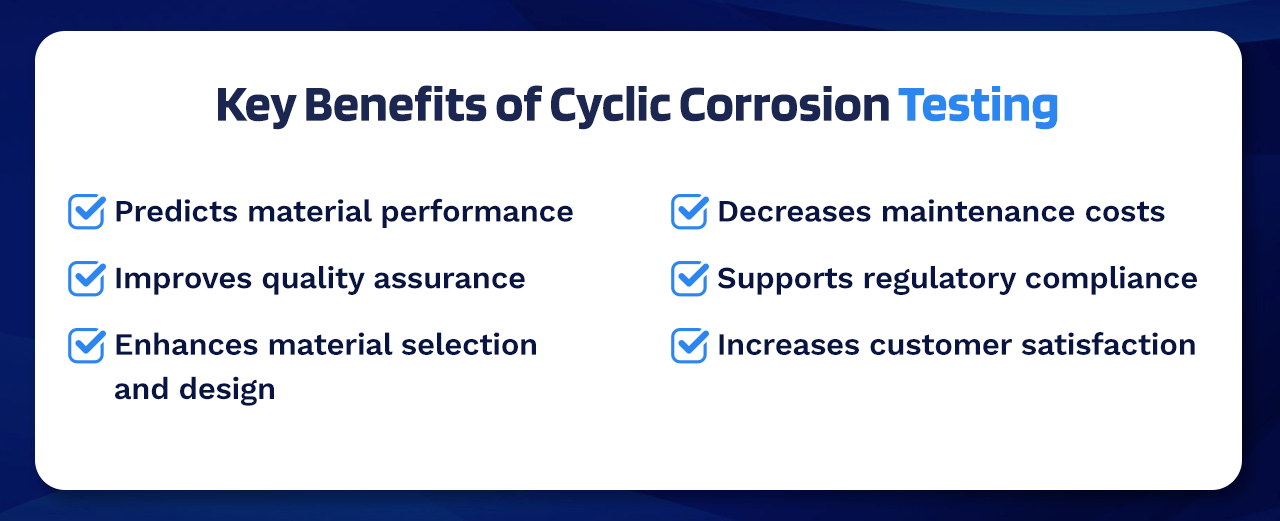
From construction to automotive to power generation, corrosion is a significant concern across various industries. When the atoms in materials oxidize due to chemical reactions with their environment, like salt and moisture, their surface and structure slowly deteriorate through corrosion. This process can affect product safety, longevity and effectiveness.
However, not all corrosion happens equally. Given how frequently environmental conditions can change, testing is necessary to understand how quickly and severely materials will corrode. Through cyclic corrosion testing (CCT), many businesses can discover the potential for corrosion failures in their products.
Learn about cyclic corrosion testing and Keystone Koating’s quality assurance testing below.
What Is Cyclic Corrosion Testing?
A cyclic corrosion test is used to evaluate how materials resist corrosion amid changing outdoor environmental conditions, such as moisture, heat and salt exposure. This laboratory testing accelerates the different corrosion failures a material could experience in a real-world setting. As a result, manufacturers can assess how materials will degrade over time in a realistic and faster manner, gaining insights about durability that can inform better quality control.
CCT can evaluate various corrosion mechanisms, such as:
- Crevice corrosion: A localized form of corrosion occurring in confined spaces, such as crevices, when moisture and contaminants become trapped.
- Galvanic corrosion: A type of electrochemical corrosion occurring when two metals are in electrical contact with one another and are exposed to an electrolyte, causing differences in electrochemical potential.
- General corrosion: A type of uniform corrosion where corrosion occurs across the surface of the material due to chemical or electrochemical reactions with the environment.
CCT can be used on numerous materials. For example, metals like steel, zinc and aluminum can undergo CCT, and so can nonmetallic materials like composites and plastics. CCT is also incredibly beneficial in testing protective coatings applied to metals, such as powder coatings.
What Is the Cyclic Corrosion Testing Process?
Keystone Koating follows American Society for Testing and Materials (ASTM) standards for CCT and other testing methods. CCT is a detailed process that can accomplish varied results based on specific testing parameters. During CCT, laboratory workers follow distinct steps to simulate different environments and gather essential information:
- Set up the controlled environment: CCT requires an enclosed testing chamber to simulate different environmental conditions. A sample of the material is placed into the testing chamber prior to testing.
- Start the cyclic exposure simulation: The tester will select different environmental conditions to test, occurring in cycles. For example, wet and dry cycles spray the sample with water and let it dry, temperature cycles heat and cool the sample, and saltwater cycles expose the sample to salt.
- Let the test run: Depending on the material and testing parameters, CCT can take several weeks to complete. In many cases, one test cycle takes 24 hours, and several test cycles are required throughout the testing.
- Observe the sample: Once testing is complete, the sample is removed from the testing chamber and observed for different indicators of corrosion. These signs typically include rust, discoloration and peeling.
Depending on the materials they’re testing, businesses may need to follow industry standards to ensure an effective testing process. For example, ASTM B117 covers standards for salt spray testing. Conducting quality assurance tests like CCT through a professional laboratory is recommended.

Key Benefits of Cyclic Corrosion Testing
At Keystone Koating, we rely on internal CCT testing and other methods to ensure our powder coatings are durable and reliable. CCT gives us insights into how your chosen coating will stand up against the elements, allowing you to make more informed decisions about surface preparation. In general, CCT is invaluable for many industries, offering the following benefits:
- Predicts material performance: CCT helps businesses understand how different products and the materials they’re made from will perform in real-world settings. This information is crucial knowledge for product planning and design, especially when corrosion could present safety issues.
- Improves quality assurance: When corrosion is a concern, CCT is necessary for quality assurance. With material performance data from CCT and other testing methods, manufacturers can make more informed quality assurance decisions to align with performance and safety standards.
- Enhances material selection and design: If testing reveals signs of corrosion, material and design changes can be made to improve corrosion resistance. For example, powder coating could be applied as a finish coat to protect against corrosion.
- Decreases maintenance costs: In many use cases, whether architecture, agriculture or a different application, product durability is essential — customers want to trust that materials will stand up over time and not require frequent replacements. By testing for corrosion, manufacturers can make the necessary changes, leading to decreased maintenance costs for customers down the line.
- Supports regulatory compliance: Many companies must follow manufacturing standards to maintain regulatory compliance for durability and safety. While CCT is just one type of testing, it can play a crucial part in overall material testing initiatives.
- Increases customer satisfaction: When investing in products, customers want to know that they’re reliable. CCT allows companies to improve product design, leading to higher customer satisfaction and trust.
Quality Assurance Testing From Keystone Koating
Keystone Koating has over 30 years of experience in providing powder coating services, and our team can also meet your quality assurance testing needs. In our fully equipped powder coating testing lab, we conduct a variety of tests according to ASTM standards for quality assurance. These tests include PCI#8, ASTM D6665, ASTM D3359, ASTM B117, ASTM D2794, ASTM D522 and independent verification.
In terms of CCT, Keystone Koating can also conduct testing based on ASTM G85 Annex 5 (Prohesion). While ASTM B117 involves moisture and wetness, ASTM G85 Annex 5 consists of both wet and cool and dry and hot cycles for real-world results. When such drastic changes in the environment are a concern, ASTM G85 Annex 5 provides precise results.
As a powder coating provider, the benefits of a quality assurance lab can’t be understated. In our lab, we can troubleshoot coating issues, test product adhesion and analyze new processes to ensure we’re providing dependable, attractive finishes customers can rely on. Additionally, we can measure how our surface preparation methods can affect your coated products.
Contact Us Today for Testing Services and Insights
Are you interested in powder coating adhesion testing or want to learn more about Keystone Koating’s cyclic corrosion testing capabilities? Contact our team today to get insights into quality assurance testing and find the best solution for your needs.
If you’re ready to get started with your powder coating project, request a quote, and we’ll get back to you within 48 hours. We look forward to working with you!


